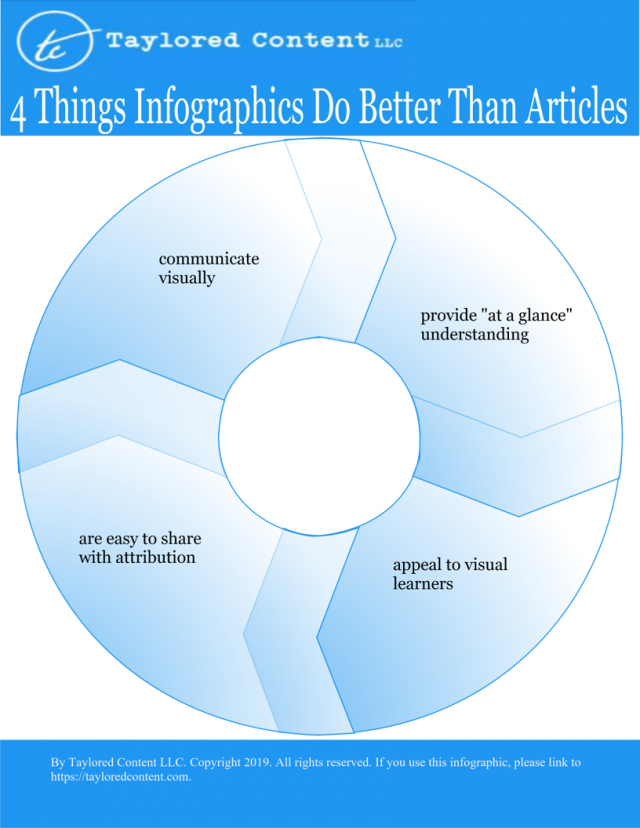How Long or Wide Does Your Infographic Need to Be?

The Secrets of Independent Book Authors

3 Ways to Work With a Ghostwriter to Write Your Book
Infographics are content pieces that rely heavily on graphical elements to tell a story or present useful data. Any type of business can publish an infographic, but how long should your infographic be and how wide should it be?
The short answer is, there is no optimal length or width for an infographic. It should be as long as it needs to be to tell the story or present your data effectively, but no longer. Width is a little more problematic because website conventions dictate. For instance, if you’re publishing your infographic on a blog, it shouldn’t be any wider than the content container in which it is placed. If your blog platform supports a width of 800 pixels, then 800 pixels should be the maximum width. If it’s 600 px, then that should be your maximum width. Traditional web pages, however, are often wider than blog posts. So that’s also a consideration.
Another consideration, for both length and width, is whether or not you’ll allow your infographic to be embedded on other web pages. You can design your infographic so that it fits into any content container, however, if the text is so small that it can’t be read in smaller containers, then it may not be useful. For that reason, design is the most important aspect of any infographic.
Infographics are powerful content pieces if done well. The key is to present data accurately and effectively by matching it with powerful graphics in such a way that readers do not lose interest. That has nothing to do with size.
Want an infographic? Contact Taylored Content today.
or call 717-253-2306


